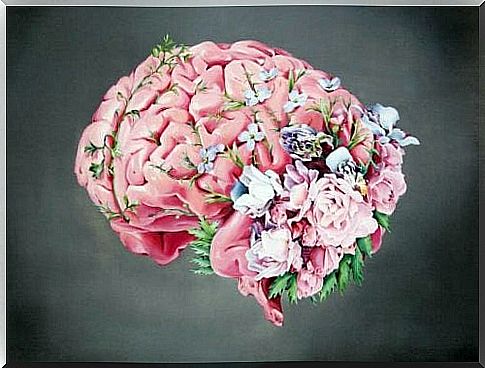Keys For Resistance: Are You Made Of Plastic, Glass Or Steel?

Are you made of plastic, glass or steel? The way we deal with everyday problems determines the material we are made of. The keys to resistance then tell us that we can always change the elements that shape us. In this way you will become a better material. It will be something between bamboo and graphene.
In order to enjoy good mental and emotional health, a certain aspect plays a decisive role. We need to understand what mechanism we use to deal with the obstacles in life.
These are the reactions that are most common. We use avoidance behavior and immobility or ‘non-resistance’.
When we suffer from stress, we don’t know how to find an alternative. We then blame ourselves. This also happens when third parties overwhelm us or when we find ourselves in a tunnel with no way out. At that point, we need to pay attention to an important aspect.
The urge to flee or stay are still pre-programmed reactions in our brains. They are defense mechanisms inherent in our basic design.
We still haven’t updated them either. They are benignly designed forms of resistance that actually help us survive. Yet they rarely contribute to our happiness.
In this sense, the keys to resistance are directly related to our well-being. This means that understanding the keys to resistance can help us immensely.

Brains that are more or less resistant to emotional stress
Most people have probably asked themselves this question at some point. Why are some people able to deal with adversity in impressive ways? We admire their self-control and their optimism.
They have a way of seeing that allows them to see possibilities where others see only walls and fences. Have these people prepared in advance? Have they taken any classes? Do they perhaps have an innate wisdom or is there something in their brain that is different?
Well, the secret is indeed in this last aspect, their brains. This may seem strange. However, there are people who have brains that are much more resistant to stress. They are personalities with greater emotional resources. This allows them to calm anxiety and avoid irrational thoughts in exceptional situations.
The Weill Cornell Medical College in New York conducted an interesting study on this topic. The researchers found that there is a direct link between a healthy attachment parenting and a greater ability to respond to stress and anxiety.

Insufficient attention and an upbringing characterized by emotional deficits alter the brain development of children. A specific finding is that the amygdala is the brain structure most affected.
The amygdala is the neurological control center responsible for controlling fear and emotions. A child who has been brought up with some kind of deficiency has a harder time controlling his emotions.
Are you made of plastic, glass or steel?
We have already pointed out that it does not matter what kind of mechanism we use to respond to difficulties, stress or adversity.
It does not matter whether we are the persons who flee or the people who remain motionless, like a mast in the middle of a storm. We can all learn new strategies. This is due to the plasticity of our brains.
We can train and stimulate the brain to adopt new approaches and renewed strategies. The brain then becomes a machine with more resistance, more skill and more refined.
The goal is to make sure that the brain doesn’t just help us survive. What we really want is for the brain to guide us in our efforts to be happier.
Here are the three most common stress responses and the keys to resistance they most commonly use.
The reaction of steel
Stress bounces off people who are made of steel. This kind of approach is not healthy at all. On the other hand, it poses many risks. After all, being fully resistant to stress means that we will not be able to learn from stress. Besides, no one is totally insensitive. After all, nobody is made of steel because our protective layer is purely emotional.

What, then, is the key in this sentence that we must understand? It’s anything but building a wall against problems and trying to bounce them off of us. However, we must arm ourselves with skills to better manage and transform the problems…
The reaction of plastic
Interesting to know is that most of us use this strategy. These are the features of this approach:
- We have several injuries that are a result of stress and adversity.
- At the same time, we are flexible and resilient. As a result, we often feel as if we are going to break. It’s like living on a tightrope.
The reaction of glass
As we can already guess, the reaction of glass is not the most suitable. In fact, it is even the worst approach. After all, it has the fewest resources. This means that it is the reaction where you eventually break. You have then made every effort to achieve results and to make adjustments. It is imposed or completely destroyed.
Keys to Resistance: What’s the Healthiest Response?
What do the keys to the healthiest resistance tell us? You have to find a middle ground between strength and flexibility, a space where you are able to steer things, prioritize and make changes in a mature way.
If we activate our innate psychological defense mechanisms, we will choose the approach of least resistance, especially glass.
On the other hand, if we choose the line of greatest resistance, we will use all our energy to counteract something. We then erect a wall to protect ourselves from life. This is obviously the steel strategy.

If neither of these two answers is the most correct, which approach should we adopt? The key to the healthiest resistance is to strengthen our self-confidence. So we need to know that we are worth something better. We will also not allow anything to overwhelm us.
Let’s transform ourselves into a material somewhere between resilient plastic and bamboo. A flexible but strong material that allows us to move with the problems and learn from them.
Even if the material bends, it will return to its original position. So we can start and work on this crucial strategy today.









